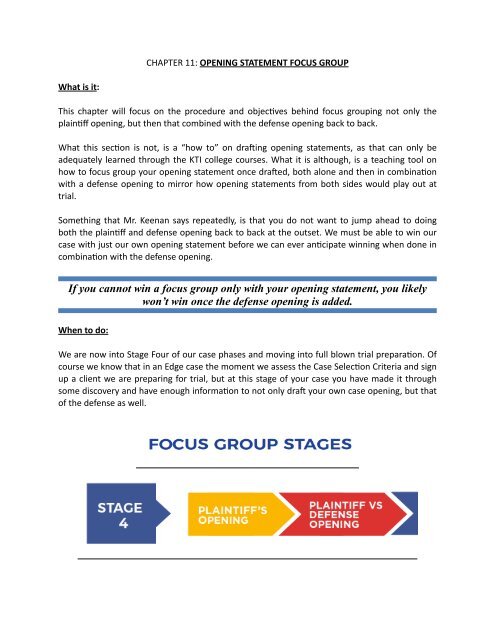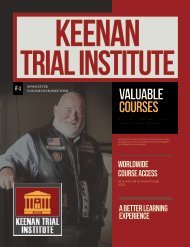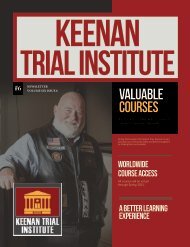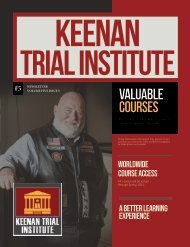FOCUS GROUPS BOOK
You also want an ePaper? Increase the reach of your titles
YUMPU automatically turns print PDFs into web optimized ePapers that Google loves.
14. Who could be hurt?<br />
15. What other industries do things like this happen in?<br />
16. What were the top three things that stood out to you?<br />
17. Why?<br />
18. Emo>onal index. 1-10<br />
Prac>ce >p: Do not overlook also iden>fying and developing your own client’s mo>ve as “right”<br />
and pure. Then you are able to illuminate the juxtaposed posi>on between a defendant’s<br />
egregious mo>ve, and your client doing everything they could have and should do.<br />
This is the viola>on of the societal quid pro quo. Your client doing everything they were<br />
supposed to do, but in exchange the defendant violated safety rules and did not do what they<br />
were supposed to do.<br />
For instance, in a medical malprac>ce case, highlight that your client went to the hospital or<br />
doctor when they first believed there was a problem, took their medica>ons, and placed their<br />
trust in the person with the exper>se.<br />
Even simpler, in an auto crash case, showing how your client followed the rules of the road, did<br />
not pick up their cell phone and drive, and otherwise had their eyes on the road; while the<br />
defendant did not.<br />
Conclusion:<br />
If you have made it through the Keenan Trial Ins>tute colleges you know that mo>ve is a major<br />
proponent of both the opening statement template as well as the closing argument template.<br />
The verbiage that is laid out in opening as quoted above, comes full circle when you deliver your<br />
closing. As the quote goes: “Tell them what you are going to tell them (opening statement), tell<br />
them (evidence and order of proof), and then tell them what you told them (closing argument).”<br />
This means that in our opening we lay the groundwork for the jury to play detec>ve and look<br />
throughout trial for the mo>ve and the why. During our order of proof and presenta>on of our<br />
case we show them the mo>ve and the why. Lastly, in closing argument we equip them with the<br />
power to do something about it. Through our focus groups we know what they believe that<br />
mo>ve is, ensure it hits the emo>onal buEons, and lays the founda>on for a substan>al verdict.






